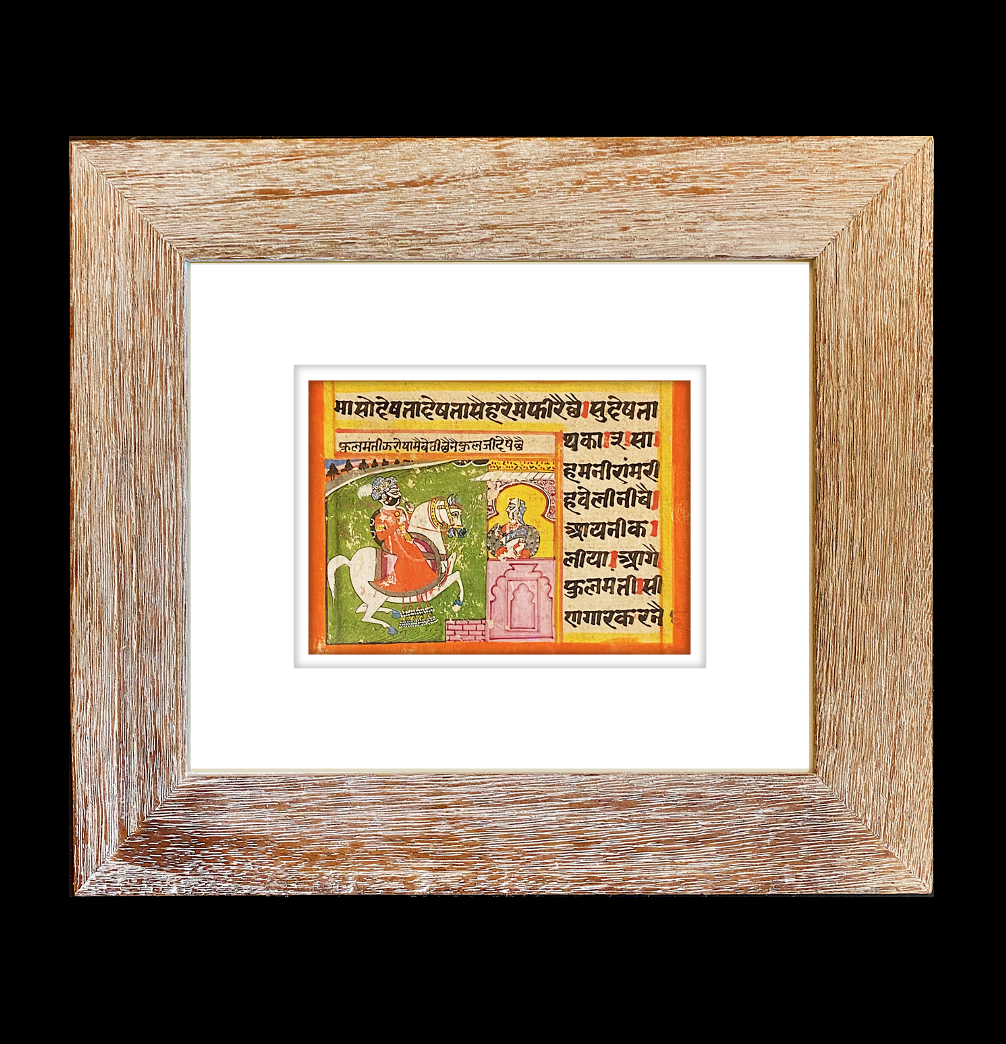

Title: Original Antique Hand-painted Indian Artwork Depicting a Cultural Story
Shipping: $29.00
Artist: N/A
Period: 18th Century
History: Ancient Art
Origin: Central Asia > India
Condition: Very Good
Item Date: N/A
Item ID: 478
For sale: A beautiful, small, original antique hand-painted Indian artwork featuring sand script calligraphy depicting a man's travels and visits throughout the countryside. The painting is done on hand-painted paper and is in good condition. Its size is 6 1/2 x 4 1/2 inches. Very old. The artwork comes framed. Indian miniature paintings, a form of traditional Indian art, have a long and rich history dating back to ancient times. These paintings are known for their intricate details, vibrant colors, and exquisite craftsmanship. One fascinating aspect of Indian miniature paintings is their depiction of San script, which is a unique writing system that has been used in various regions of India. San script, also known as Sharada script, is an ancient Brahmi-derived script that originated in the Kashmir region of India. It was primarily used to write Sanskrit, the classical language of India, and was considered a sacred script. The San script was also used for writing other languages, such as Prakrit, Kashmiri, and Shina, in different regions of India. Indian miniature paintings often featured San script as a prominent element in their compositions. The script was meticulously painted using fine brushes and natural pigments. The text written in San script was usually inscribed on scrolls, banners, or within the paintings themselves, serving various purposes. These inscriptions typically included religious verses, poetic compositions, or descriptions of the depicted scenes. The imagery depicted in Indian miniature paintings with San script varied widely, depending on the theme and purpose of the painting. Many miniature paintings depicted scenes from Hindu mythology, such as stories from the Ramayana and Mahabharata, along with depictions of Hindu deities and celestial beings. The paintings also depicted scenes from everyday life, including courtly scenes, hunting scenes, portraits of nobility, and scenes from nature. The culture of the time was intricately woven into these miniature paintings. They often depicted the clothing, jewelry, hairstyles, and other aspects of the social and cultural life of the people of that era. For example, miniature paintings from the Mughal period (16th-19th centuries) often depicted the royal court and its lavish lifestyle, including the attire of the emperor, empress, and courtiers, as well as scenes from courtly festivities and hunting expeditions.
Indian miniature paintings with San script were created by highly skilled artists who were patronized by royalty, nobility, and wealthy merchants. These paintings were typically created on small-scale materials, such as paper, ivory, or silk, using natural pigments extracted from minerals, plants, and insects. The artists used delicate brushes made from squirrel or camel hair to create intricate details and achieve a high level of precision. In addition to the San script, Indian miniature paintings also featured other elements, such as decorative borders, stylized motifs, and intricate patterns. These added to the aesthetic appeal of the paintings and made them true masterpieces of art. Today, Indian miniature paintings with San script continue to be cherished as a valuable part of India's artistic heritage. They are collected by art connoisseurs and displayed in museums, galleries, and private collections around the world. These paintings provide insights into the history, culture, and artistic traditions of ancient India and serve as a testament to the skill and creativity of the artists who created them.